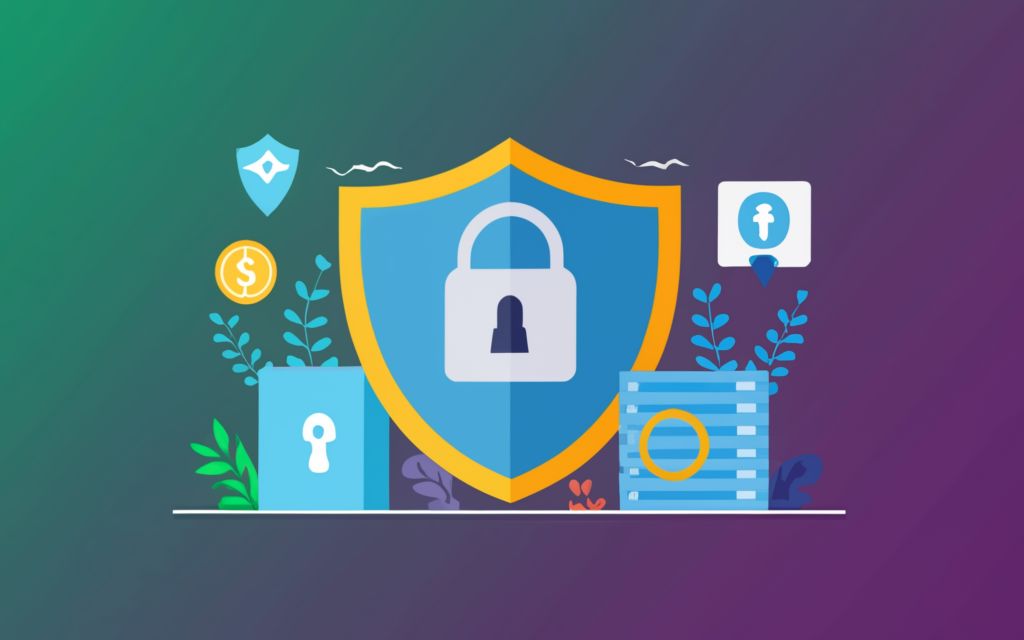As cryptocurrencies continue gaining mainstream traction, this emerging asset class faces intensifying threats from cybercriminals aiming to exploit security vulnerabilities for financial gain. From ransomware attacks to DNS hacking schemes, crypto holders must implement vigilant protections to shield their digital holdings from unauthorized access and theft.
The Gathering Storm: An Overview of Cyber Threats Targeting Crypto
The pseudonymous and digital-only nature of cryptocurrencies establish prime targets for cyberattacks including:
- Phishing Scams: Sophisticated phishing emails or fake exchange login pages trick users into sharing wallet keys or personal information to enable account infiltration and asset theft.
- Malware Infections: Malicious software covertly installed onto devices provides backdoor access into connected wallets to drain funds or lockdown systems until ransom demands are met.
- 51% Attacks: Bad actors aiming to dominate blockchain networks through majority control can then manipulate transaction ordering and verification for fraudulent ends.
- DNS Hacking: Exploiting domain name system infrastructure allows hackers to divert crypto transactions to their addresses rather than intended destinations.
As cryptocurrency valuations swell into the trillions, criminals sit poised to unleash novel attack vectors or refine existing techniques for pilfering these ripe digital coffers. The maxim “If it connects, it can be hacked” rings disturbingly true regarding the blockchain ecosystem’s vexing security challenges.
Why Fortifying Your Defenses Matters
All cryptocurrency participants share responsibility for fostering secure environments resistant to malicious activities. Yet beyond philosophical arguments around communal welfare, self-interest crucially demands individuals implement robust security postures.
Without adequate safeguards in place, crypto holders risk devastating loss events through theft or ransomware locking access until disproportionate payments are made to unknown extortionists. Imagine losing your life’s savings virtually in an instant with minimal hope of recovery or perpetrator accountability.
Such nightmarish scenarios play out daily for thousands of investors who neglect proper security protocols. Besides financial devastation, data breaches also erode privacy through information leakage that festers indefinitely on the blockchain’s permanent record. By preventing intrusions in the first place via layered countermeasures, crypto users reap intertwined benefits of asset protection and personal privacy.
Best Practices for Securing Cryptocurrency Assets
Combating intensifying cyber threats targeting crypto participants demands proactive adoption of security best practices weaving prevention measures into daily habits.
- Utilize Hardware/Paper Wallets for Major Holdings: Transact spending funds through reputable software and mobile wallets but maintain majority holdings in “cold” hardware or paper wallets detached from internet connectivity. Diversify across multiple hardware devices and carefully guard backup recovery phrases.
- Implement Strong Passwords and Multi-Factor Authentication (MFA): Complex and unique passwords frustrate brute force attacks. Enable MFA options via SMS texts, authentication apps, Face/Touch ID, or security keys for additional login protection.
- Keep Software Up-To-Date: Consistently patch and update apps, operating systems, browsers, and devices to benefit from the latest security enhancements. Enable auto-update options when available.
- Vet Services for Security Postures: Scrutinize crypto exchanges, wallet providers, DeFi sites, and other services on implemented security layers, auditing practices, and incident transparency before sharing data or funds.
- Understand Transaction Mechanisms: Confirm destination addresses match exact intended recipients before submitting transfers. Always verify URLs match legitimate sites and confirm domain certificates are valid and trusted.
- Establish Backup Recovery Processes: Securely store recovery phrase backups offline using distributed redundancy to survive equipment loss. Test restoration periodically.
- Monitor Account Activity Frequently: Log in often to scan for suspicious transactions and review permissions granted to connected services or apps.
- Run Reputable Cybersecurity Software: Install comprehensive antivirus suites, endpoint protection platforms, password managers, VPNs and utilize privacy-enhancing browsers like Brave for multilayered threat protection and authenticated encryption.
Identifying Early Warning Signs of Cyber Threats
Despite extensive safeguards, breaches still occur exposing crypto assets to potential compromise. By recognizing common early warning signs of cyberattacks, quick incident detection and response actions significantly control damages:
- Unusual withdrawal transactions or activities lack explanation
- Login failure notifications for services with no recollection of access attempts
- Funds remitted to unknown or atypical digital addresses
- Ad-laden, misspelled or irregular web URLs
- Persistent login delays, error messages or unexpected platform behaviors
- Database files, keys or recovery words automatically downloading
When observing any suspicious activities – however minor – immediately execute containment procedures:
- Lock down potential breached accounts
- Reset passwords and revoke permissions for linked apps/keys
- Contact account providers through authenticated channels
- Move funds into new wallets with entirely fresh keys
- Scan devices for malware and run diagnostics tests
With crypto holdings at risk, hesitating to scrutinize and address abnormal behaviors courts disaster.
Ongoing Strategies for Improving Crypto Defenses
The nonstop arms race against cybercrime demands ongoing improvements to security postures as new threats emerge. Regularly apply enhanced protocols:
- Migrate to increasingly secure wallets, apps and services
- Partition holdings across multiple isolated wallets
- Update account protections with added MFA factors
- Frequently cycle access keys and recovery seeds
- Further automate patching, encryption and authentication controls
- Establish active monitoring of credential leaks and dark web chatter
Additionally, continually expand personal cybersecurity knowledge through industry resources like conferences, government alerts, and groups like CryptoSafe Alliance to deeply understand the ever-evolving threat landscape.
Top Security Solutions for Safeguarding Crypto Assets
| Security Tool | Core Protection Features | Primary Compatibility |
| Hardware Wallets | Air-gapped cold storage, tamper-proofing, encryption | Trezor, Ledger, SecuX support major cryptocurrencies |
| Password Managers | Secure digital vaults, password generation & storage, MFA capabilities | Cross-platform & browser support covering thousands of sites |
| Antivirus Software | Malware detection via signature matching, heuristics and machine learning, real-time monitoring | Windows, Mac, Linux, Android and iOS devices |
| Firewalls | Access controls, whitelisting, network monitoring, threat intelligence | Enterprise networks, home routers, desktops and mobile devices |
| VPNs | Encrypted tunneling, IP masking, DNS spoofing protection, security auditing | Windows, Mac, iOS and Android OS ecosystems |
This assessment of multilayered cybersecurity and cryptography measures defend against external threats while limiting damage potential through compartmentalization and operational security practices.
Ongoing Vigilance: Your Best Weapon
Despite extensive technological controls, human vigilance represents the frontline defense for thwarting most cyber attacks targeting cryptocurrencies given how many schemes leverage social engineering over software vulnerabilities.
Establishing diligent security routines, monitoring account activity, expanding cybersecurity awareness, and validating threats through reliable channels fortifies anti-fraud mental models that force criminals to continuously evolve tactics. Paired with software-based protections, vigilant users significantly tilt the battlefield against cyber villains preying upon the complacent.
While cryptocurrencies symbolize the vanguard of financial liberation and decentralization, this freedoms-focused paradigm depends wholly on securing the underlying networks and asset holders from corruption. By implementing best practices for safeguarding wallets, intelligently identifying threats and responding decisively, proactive crypto users contribute to strengthen the system’s antifragility against attacks aiming to undermine its longevity.
Frequently Asked Questions on Crypto Security
How can hardware wallets better secure my cryptocurrency? Hardware wallets offer offline “cold” storage through encrypted physical devices immune to remote hacking attempts. Private keys remain isolated from the internet within specialized secure chips.
What’s the best method for backing up my cryptocurrency wallet? Store recovery seed phrases, typically 12-24 words, in durable mediums like metal plates or notebooks secured in geographically distributed locations to prevent simultaneous losses. Never digitally expose phrases.
What steps protect against phishing attempts targeting my cryptocurrency? Utilize comprehensive antivirus suites to block known phishing sites plus exercise skepticism when receiving sudden security warnings. Verify sender addresses and hover over embedded links to inspect destinations before interacting or entering information.
How do multi-signature and multi-factor authentication bolster cryptocurrency security? Requiring multiple signatures or authentication credentials for transactions/logins compounds difficulty for attackers successfully accessing accounts with stolen or phished credentials alone.
How can monitoring cryptocurrency transactions enable better threat detection? Frequently reviewing native wallet and exchange records exposes abnormal activities early when interventions remain most effective for averting major breaches. Automated tracking solutions also assist monitoring.
Which cybersecurity vulnerabilities represent the greatest risks for crypto investors? Compromised random number generators weakening wallet key generation, insufficient encryption protocols expose data leakage risks, and reliance on insecure data storage or transmission mechanisms undermine cryptographic defenses.
What emergency options still exist if my cryptocurrency holdings become compromised? Depending on breach severity, users can initialize account lockdowns, instantly revoke access permissions, coordinate block confirmations to reverse fraudulent transactions, sweep funds into entirely new wallets or seek legal restitution efforts against responsible parties.
Conclusion:
In the dynamic landscape of crypto, security is not an option—it’s a necessity. As the crypto space evolves, so do the threats. The responsibility to secure your digital assets lies with you, the crypto holder. By staying informed, adopting best practices, and leveraging robust security tools, you become a formidable defender against cyber threats.
Remember, the war against cyber threats is ongoing, and vigilance is your best weapon. Safeguarding your crypto holdings is not just about protecting your financial assets; it’s about upholding the principles of decentralization, privacy, and financial freedom that cryptocurrencies represent. Together, as a vigilant and proactive community, we can fortify the foundations of the crypto ecosystem for a secure and resilient future.

Soraya Marlar is a 43-year-old cryptocurrency trader and analyst. She got her start in the financial world as a stockbroker in the late 1990s, and has been involved in the crypto market since early 2017. Soraya is highly respected within the crypto community for her trading skills and market analysis.

